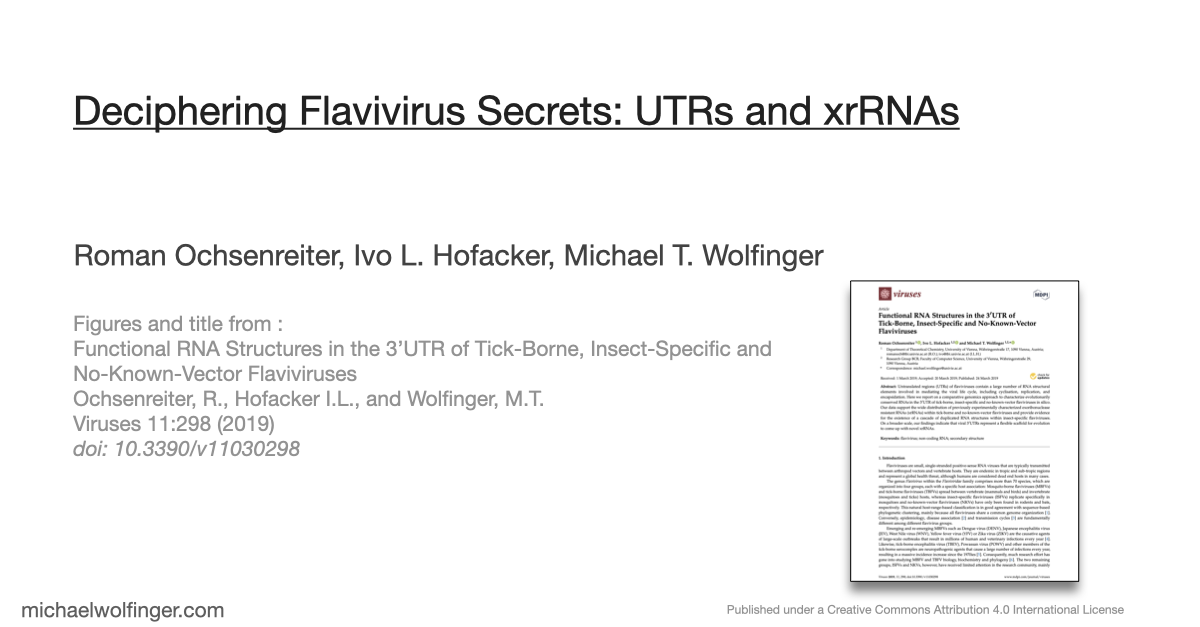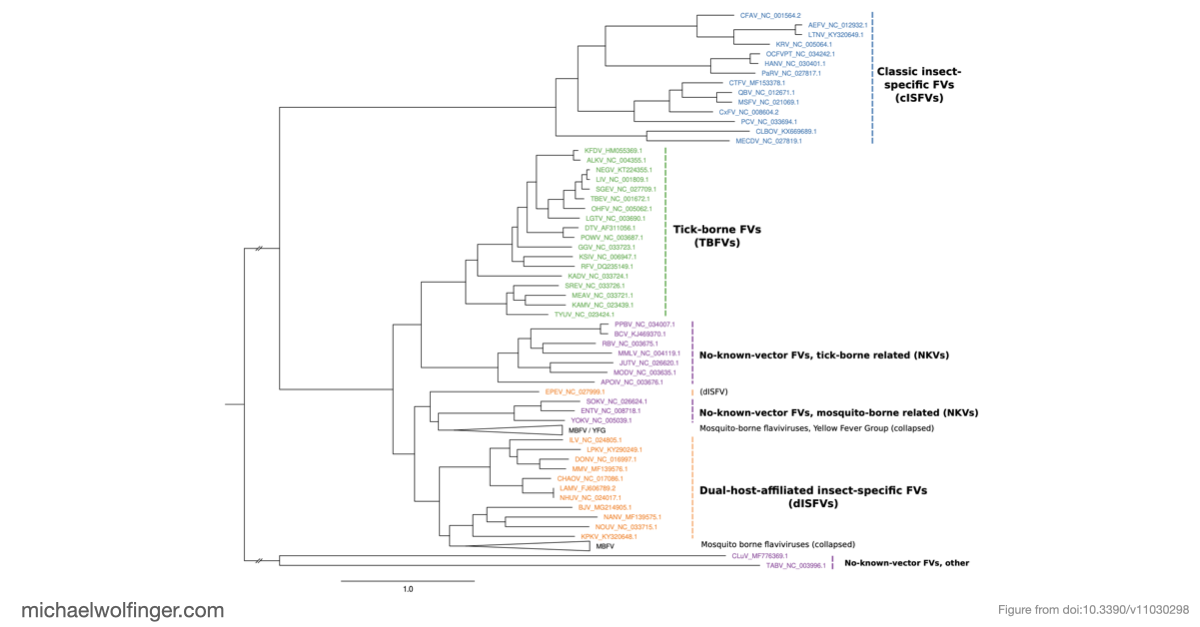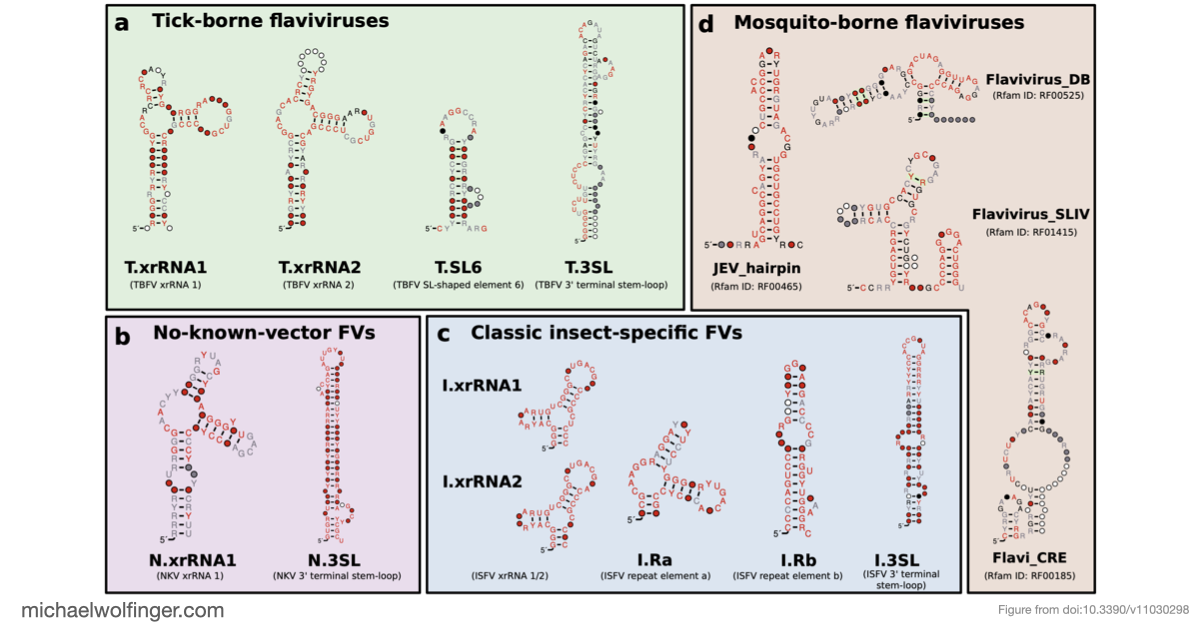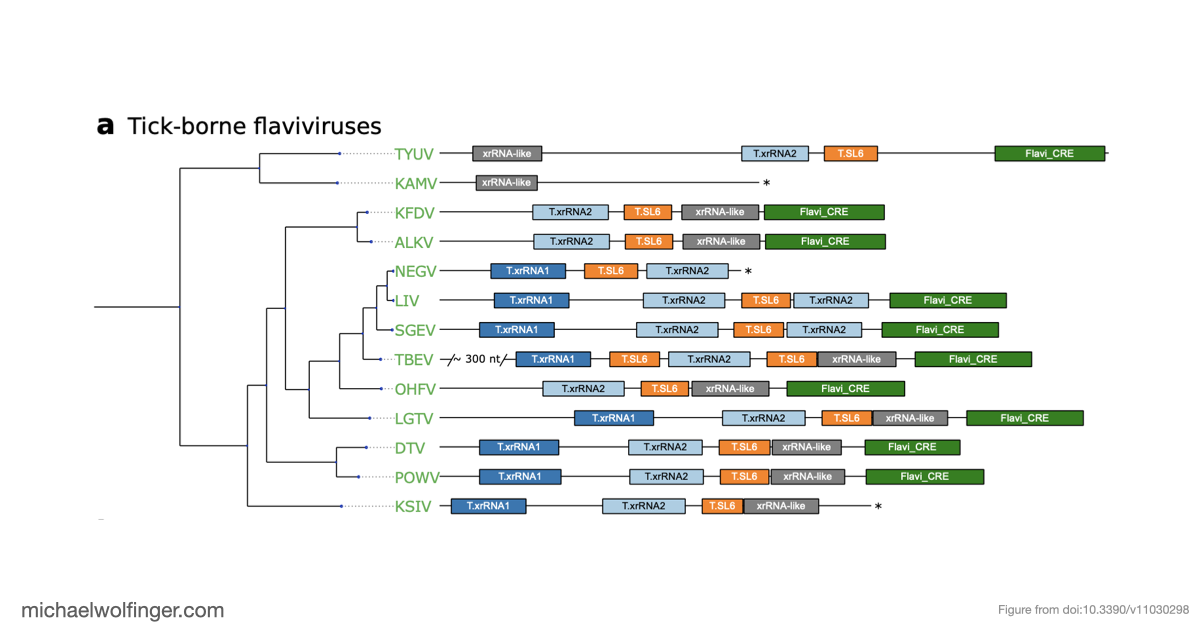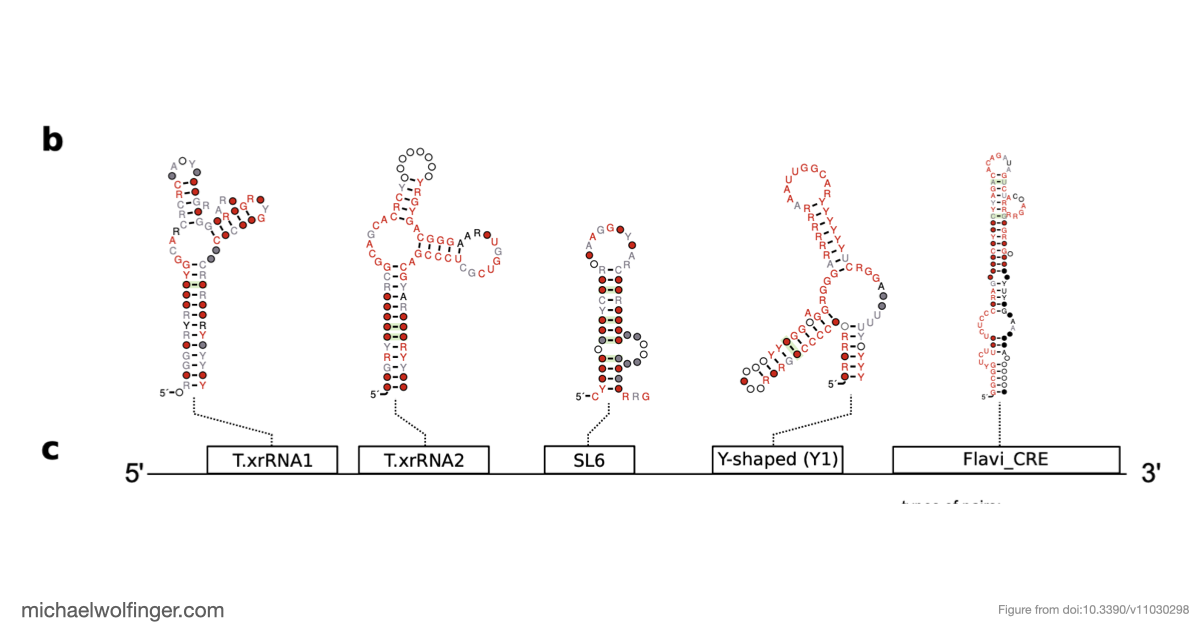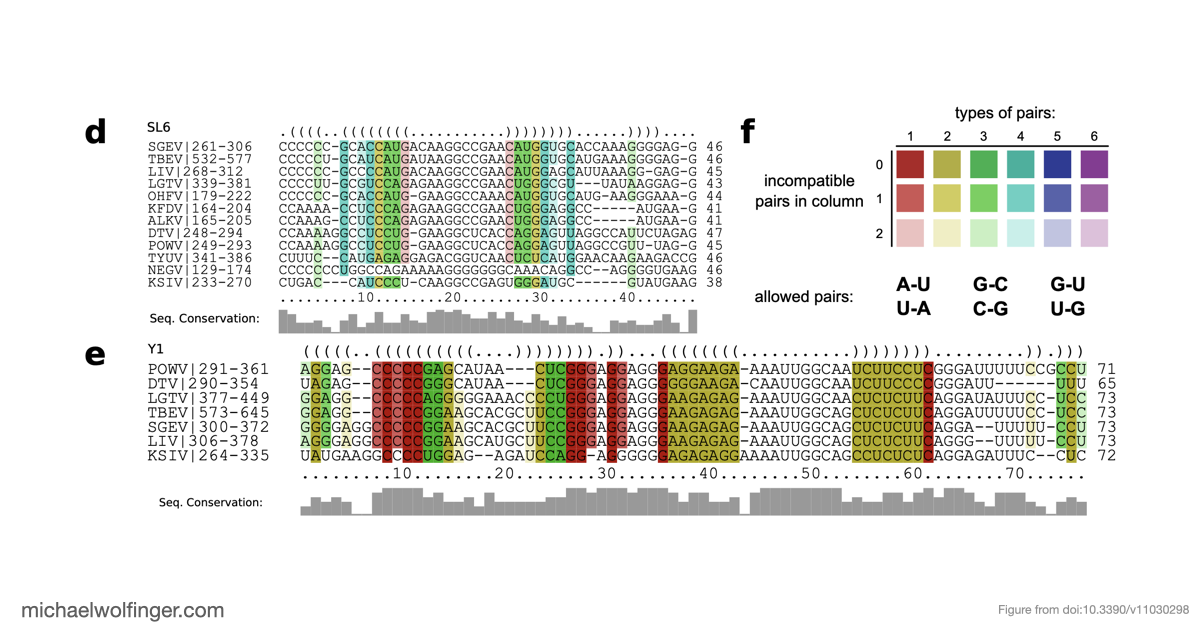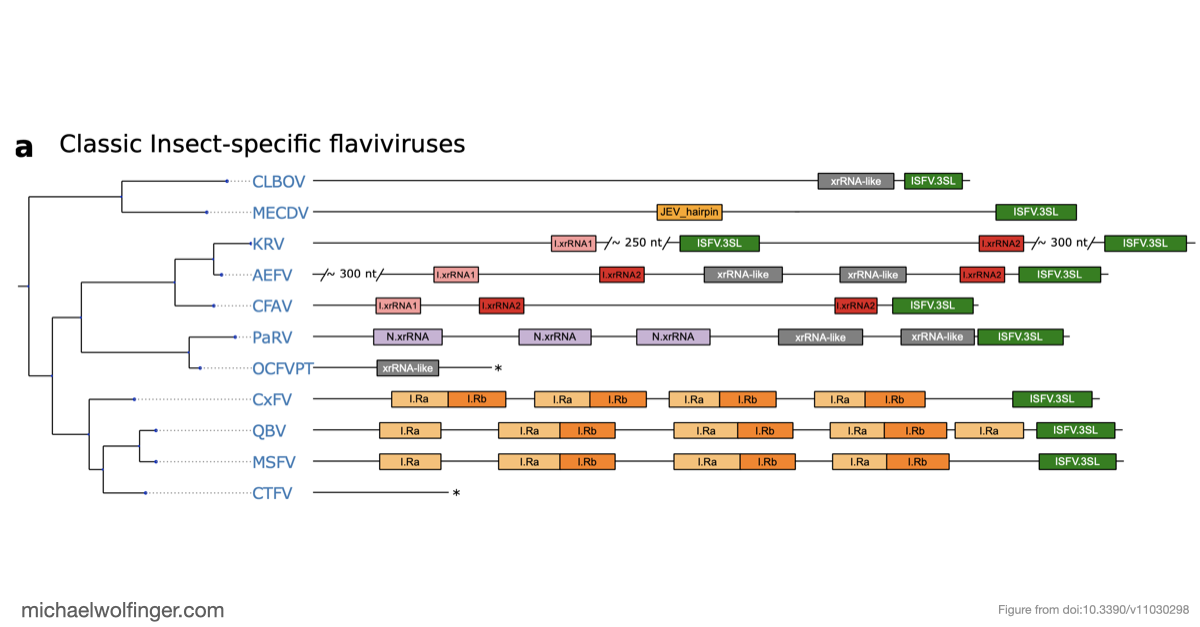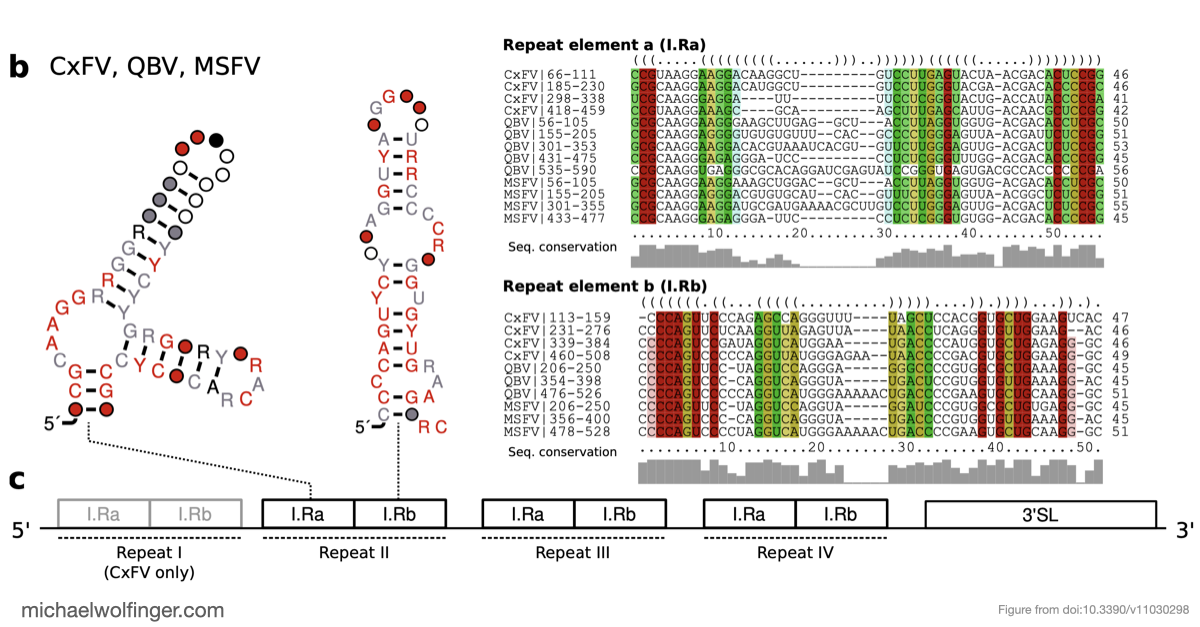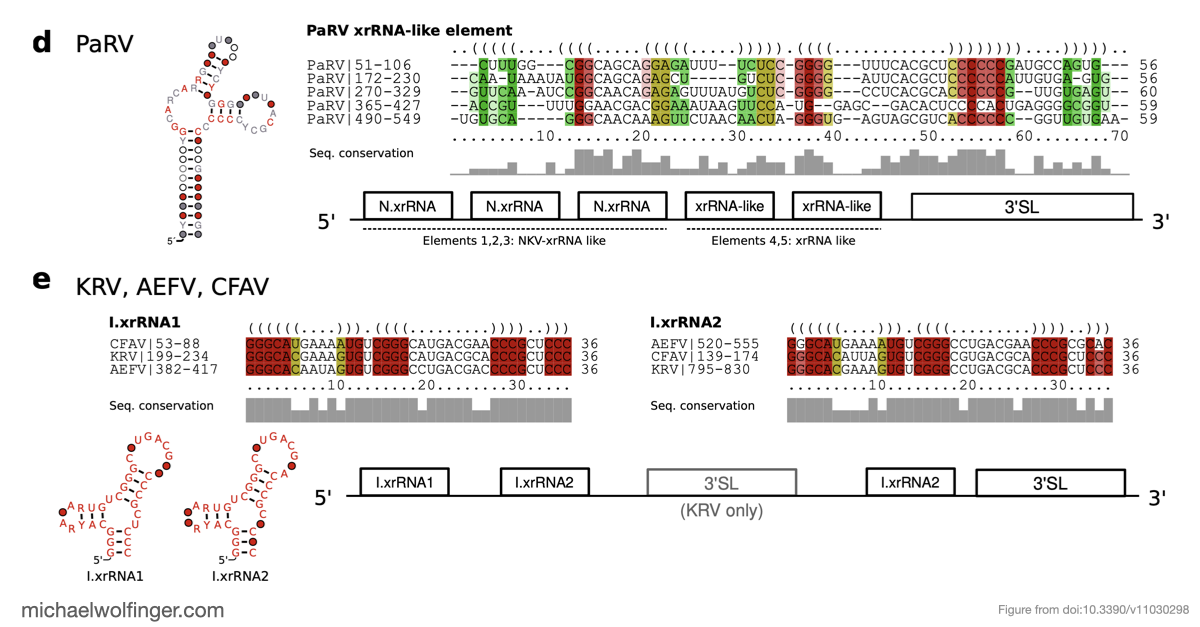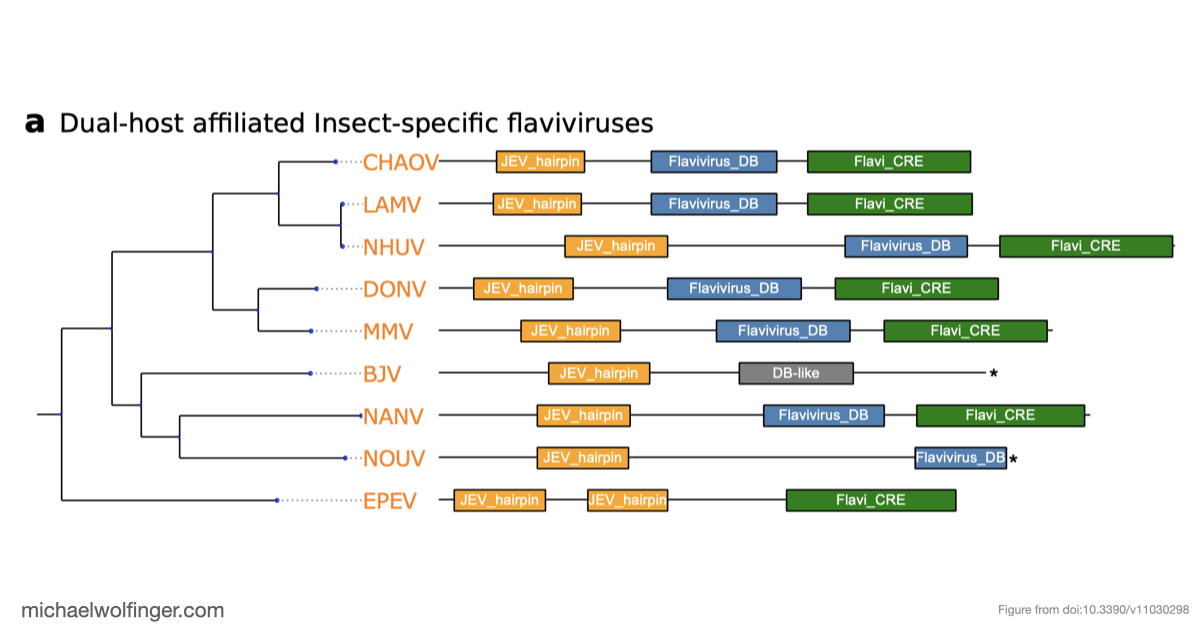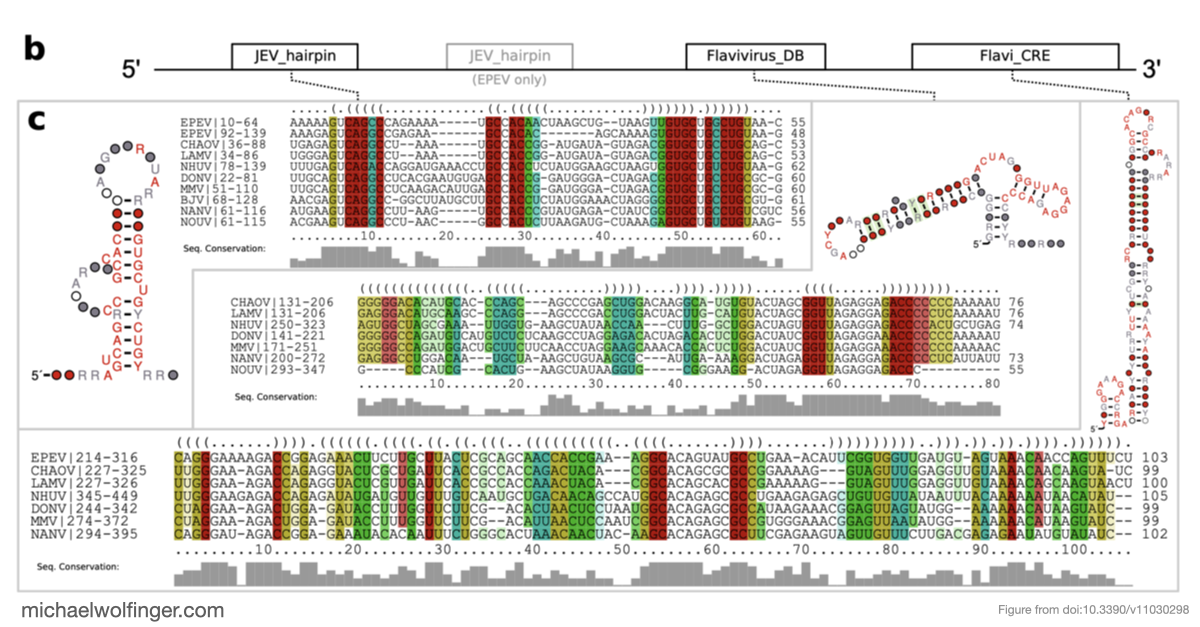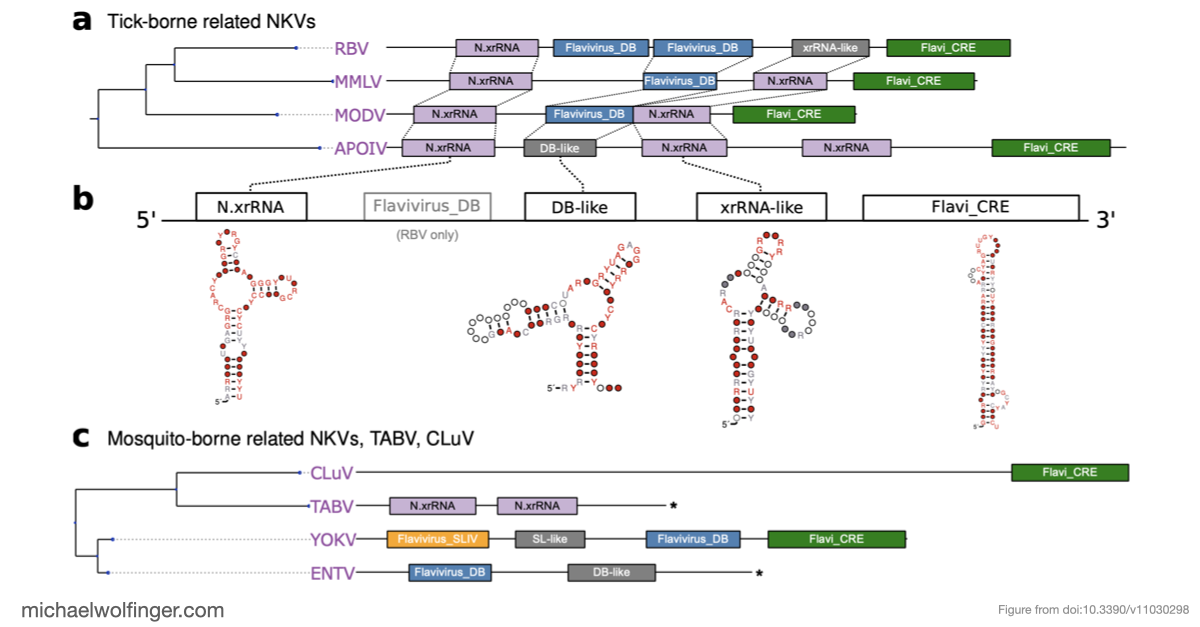Comparative look at flavivirus UTRs: Similarities and surprises
This study highlights the crucial role of untranslated regions (UTRs) in flaviviruses and the discovery of exoribonuclease resistant RNAs (xrRNAs). These findings showcase the importance of virus bioinformatic studies in advancing our understanding of infectious diseases and their relevance to broader health goals
In this publication, we shed light on the significance of untranslated regions (UTRs) within flavivirus, a diverse group of RNA viruses responsible for pathology in human and animals.
Within the UTRs of flaviviruses lies a wealth of RNA structural elements crucial for mediating various aspects of the viral life cycle, including genome circularization, replication, and encapsidation. These elements are far from genetic filler; they are essential components that determine the virus's ability to thrive within its host.
This paper presents findings from a comparative genomics approach that aimed to identify evolutionarily conserved RNAs within the 3' UTR of different flaviviruses. Notably, the research supports the presence of exoribonuclease resistant RNAs (xrRNAs) in tick-borne and no-known-vector flaviviruses. These xrRNAs play a pivotal role in safeguarding viral RNA from degradation, ensuring the virus's persistence within the host.
Interestingly, the study also unravels a cascade of duplicated RNA structures within insect-specific flaviviruses, highlighting the remarkable adaptability of these viruses in evolving novel xrRNAs. This evolutionary flexibility enables them to effectively evade host immune responses.
By emphasizing the relevance of virus bioinformatics studies in synthetic biology, this research contributes to broader health goals. A deeper comprehension of the molecular intricacies of viruses and their interactions with hosts sets the stage for more efficacious strategies to combat infectious diseases, offering promising avenues for synthetic biology interventions.
Figures and Data
Citation
Functional RNA Structures in the 3’UTR of Tick-Borne, Insect-Specific and No Known Vector Flaviviruses
Roman Ochsenreiter, Ivo L. Hofacker, Michael T. Wolfinger
Viruses 11:298 (2019) | doi:10.3390/v11030298 | PDF | Figures
See Also
Functional RNA Structures in the 3’UTR of Mosquito-Borne Flaviviruses
Michael T. Wolfinger, Roman Ochsenreiter, Ivo L. Hofacker
In Virus Bioinformatics, edited by Dmitrij Frishman and Manja Marz, pp65–100. Chapman and Hall/CRC Press (2021) | doi:10.1201/9781003097679-5 | Preprint PDF | Figures
Evolutionary traits of Tick-borne encephalitis virus: Pervasive non-coding RNA structure conservation and molecular epidemiology
Lena S. Kutschera, Michael T. Wolfinger
Virus Evol. (8):1 veac051 (2022) | doi:10.1093/ve/veac051 | PDF | Figures
